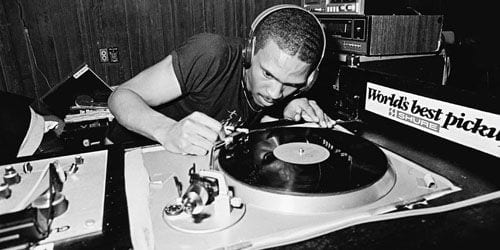
At first glance, you might think that Creative License: The Law and Culture of Digital Sampling is only for certain types of musicians, or for attorneys specializing in copyright and intellectual property law. You might also think, based on the title and the fact that digital sampling has been a part of popular music for several decades now, that the book is a little late to the game. Fortunately, neither of these impressions is accurate.
Creative License is for musicians, music fans and anyone interested in the history of hip-hop, sampling, and mash-ups, as well as for those who are curious about the evolution of US copyright and licensing laws. It’s also incredibly timely, given the present climate of our musical culture, when the internet has made sampling—in every medium—a way of life.
Kembrew McLeod, Associate Professor of Communication Studies at the University of Iowa, author, documentarian (Copyright Criminals) and Peter DiCola, Assistant Professor at Northwestern University School of Law and board member of the Future of Music Coalition explain that, in their opinions, the current digital copyright laws punish musicians who sample the work of other artists’ in their own music, and that’s neither fair, nor conducive to the creative process.
Beginning with explanation of copyright law and how it came to be what it is today, McLeod and DiCola present information in a simple, succinct language that flows with the ease of a narrative tale. It’s not difficult to follow at all, in fact, it’s rather compellingly written. You’re drawn along the trail from the collections of ’30s folk recordings amassed by music historian Alan Lomax, to the early golden age of sampling, in late ’70s and ’80s hip-hop, and from there to the lawsuits of the last decade and the more recent implications the laws and practices surrounding sampling are having for musicians at the height of the internet age.
For instance, acquiring sampling licenses can be very expensive. This is because each sample generally requires two types of licenses, one for the master recordings of the song, and one for the composition itself. Add to that the fact that it can sometimes take months to even obtain price quotes for a license to sample a recording, and it’s easy to see how prohibitive this could be for an artist, not to mention for the whole creative process.
The internet and social media have given a certain element of truth to the phrase “everyone’s an artist”. Instant, real-time collaboration and crowd-sourcing have completely changed the way in which music is made, shared and remade, so the laws about how music is made should be informed and influenced accordingly. McLeod and DiCola do offer some suggestions as to how copyright law could be adapted to work for the current culture, but their main point is that these laws were designed by this society, and should therefore change and respond to changes within this this society. They are simply saying that copyright law needs to keep up.
In addition to the legal, cultural and historical context it provides, and the suggestions it makes for music’s future, Creative License features interviews with more than 100 artists who are part of the musical sampling community including Cee-Lo Green, George Clinton, David Byrne, De La Soul, DJ Premier, DJ Qbert, Eclectic Method, El-P, Girl Talk, Matmos, Mix Master Mike, Negativland, Public Enemy, RZA, T.S. Monk and Clyde Stubblefield.

![Call for Papers: All Things Reconsidered [MUSIC] May-August 2024](https://www.popmatters.com/wp-content/uploads/2024/04/all-things-reconsidered-call-music-may-2024-720x380.jpg)



